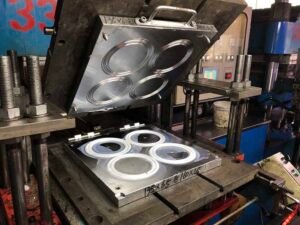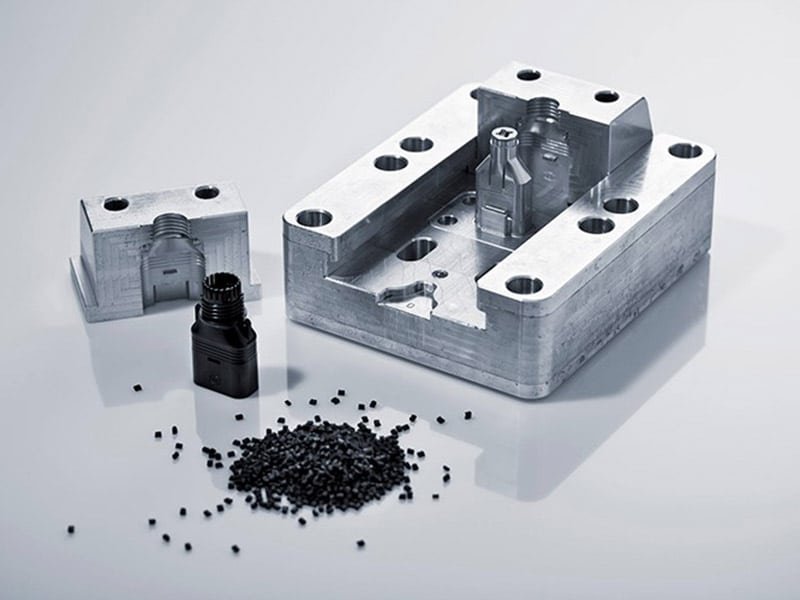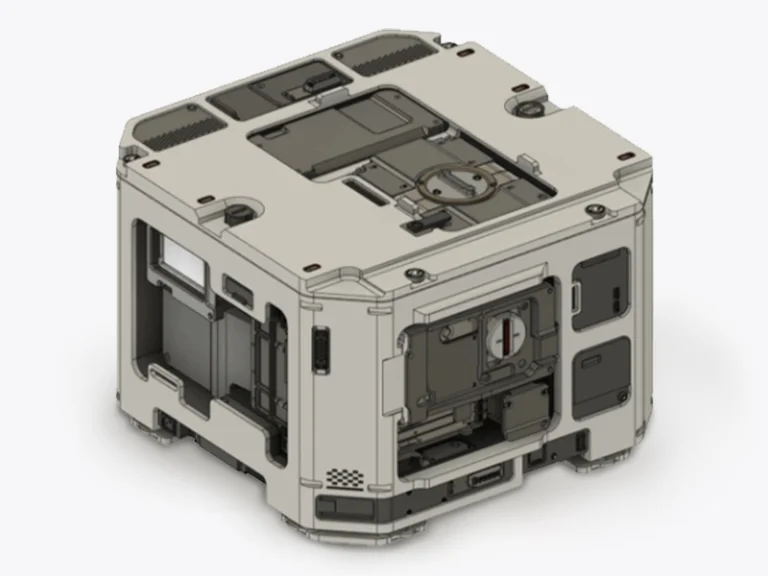Injection molding is the popular manufactur method of precise plastic parts for industries ranging from automotive to medical. Central to this process is the mold, and selecting the right type—whether a single cavity mold, multi cavity molds, or family mold—is critical for balancing cost, efficiency, and quality. This article explores the role of cavities in injection molding, compares single cavity vs multi cavity mold and family mold injection molding, and provides guidance on choosing the best mold for your needs.
The Role of Cavities in Injection Molding
Cavities are the heart of any injection mold, shaping molten plastic into the desired part. In multi cavity injection molding, multiple cavities produce several parts per cycle, while a single-cavity mold creates just one. The number and arrangement of cavities directly impact production speed, cost, and part consistency. A well-designed mold ensures uniform filling, proper cooling, and smooth ejection, minimizing defects like warpage or voids.
Main Advantages and Disadvantages of Single-Cavity vs. Multi-Cavity Molds
When it comes to injection molding, choosing between single-cavity and multi-cavity molds is a critical decision that impacts production efficiency, cost, and product quality. Each type of mold has its unique strengths and limitations. Below, we explore the key advantages and disadvantages of both to help you understand which might be best suited for your manufacturing needs.
Advantages of Single-Cavity Molds
Simple Structure
Single-cavity molds have only one cavity. They have a straightforward design, making them easier and faster to manufacture. This simplicity often translates to lower initial tooling costs and quicker turnaround times for mold fabrication.
Ease of Debugging and Setup
Because there is only one cavity, the flow of molten material is easier to control and optimize. This makes it simpler to troubleshoot issues such as incomplete filling or defects, leading to more stable production runs.
Consistent Product Quality
Producing one part per cycle allows for better control over the molding parameters, resulting in consistent product quality and reduced variability between parts.
Ideal for Small Batch Production
Single-cavity molds are well-suited for prototyping, product development, or small production runs where flexibility and lower upfront investment are important.
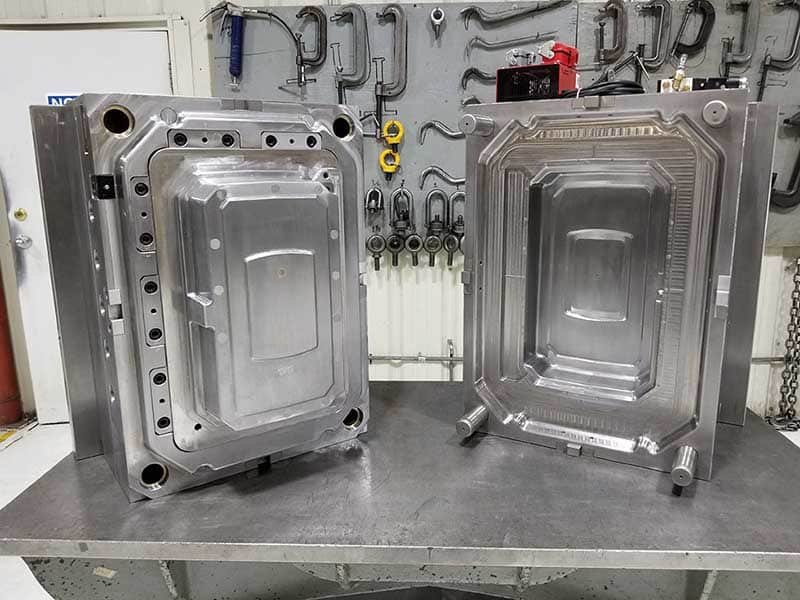
Disadvantages of Single-Cavity Molds
Low Production Efficiency
Since only one part is produced per cycle, the overall output is limited, which can be a bottleneck in high-volume manufacturing.
Higher Unit Cost
The slower production rate means that the cost per part remains relatively high, especially when large quantities are required.
Potential for Color Variation
When producing large batches over multiple cycles, there may be slight variations in color or finish between parts due to changes in processing conditions.
Advantages of Multi-Cavity Molds
High Production Efficiency
Multi-cavity molds can produce multiple parts in a single injection cycle, significantly increasing output and making them ideal for mass production.
Lower Unit Cost for Large Volumes
Although the initial mold cost is higher, the ability to produce many parts simultaneously reduces the cost per unit when manufacturing large quantities.
Improved Color and Quality Consistency
Parts produced in the same cycle tend to have more uniform color and physical properties, which is important for products requiring tight specifications.
Compatibility with Automation
Multi-cavity molds are well-suited for automated production lines, enabling faster cycle times and reduced labor costs.
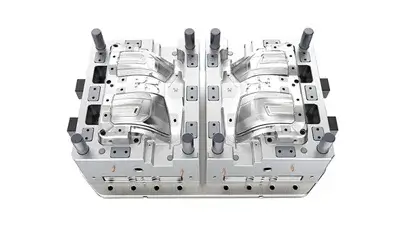
Disadvantages of Multi-Cavity Molds
Complex Mold Design
Designing a multi-cavity mold requires careful consideration of balanced flow channels, uniform cooling, and consistent filling, which increases design complexity and manufacturing time.
Filling Challenges
Ensuring that each cavity fills evenly can be difficult. Unequal flow can lead to defects such as short shots or warping, impacting product quality.
Higher Maintenance Costs
The complexity of multi-cavity molds means that maintenance, troubleshooting, and repairs are more challenging and expensive.
Not Cost-Effective for Small Batches
Due to the high upfront cost and complexity, multi-cavity molds are generally not economical for low-volume production runs.
Multi Cavity Mold vs Family Cavity Mold
In injection molding, both multi-cavity molds and family cavity molds are designed to produce multiple parts in one cycle, but they serve different purposes and have distinct characteristics. Understanding these differences is key to selecting the right mold type for your project.
Multi-cavity molds produce multiple identical parts simultaneously within one mold. For example, a four-cavity mold will produce four identical components per injection cycle, which is ideal for mass production of the same part.
Family molds (also called “family cavity molds”) are a special type of multi-cavity mold that produce different but related parts in the same cycle. Instead of replicating the same part, a family mold contains cavities for multiple components that together form an assembly or product. For instance, a family mold might produce a speaker’s casing, buttons, and internal supports all at once.

Main Differences Between Multi-Cavity and Family Molds
1. Part Variety and Production Efficiency
- Multi-cavity molds focus on producing many copies of the same part quickly, which shortens lead times and is ideal for high-volume production of a single component.
- Family molds produce multiple different parts simultaneously, which significantly reduces assembly time because all the necessary components for an assembly are made in one shot. This is especially useful for complex products made of multiple pieces.
2. Mold Design Complexity and Flexibility
- Multi-cavity molds have simpler designs since all cavities are identical, making them easier to design, manufacture, and maintain.
- Family molds are more complex because each cavity is different, requiring more intricate flow channel balancing, cooling design, and mold maintenance. However, family molds offer greater flexibility since different parts can be swapped or modified independently, reducing downtime during product changes.
3. Cost Implications
- Multi-cavity molds generally have a high upfront cost but reduce the unit cost of identical parts as production volume increases.
- Family molds can lower overall tooling costs by combining multiple parts into one mold, avoiding the need to build separate molds for each component. This can be cost-effective for assemblies where all parts use the same material and production volumes are moderate.
4. Maintenance and Tooling Requirements
- Multi-cavity molds require less complex maintenance due to uniform cavities and simpler tooling.
- Family molds demand more frequent and detailed maintenance and calibration to ensure all different cavities produce parts within specification, given their varied designs.
5. Product Quality and Consistency
- Multi-cavity molds typically yield more consistent quality across parts since all cavities are identical and conditions are uniform.
- Family molds face challenges maintaining uniform quality because different parts may have different cooling and filling requirements, risking dimensional variations.
Applications of Different Injection Mold Cavity Types
Each mold type serves distinct manufacturing needs, tailored to specific industries and production goals. The table below outlines the primary applications of single cavity molds, multi cavity molds, and family mold injection molding.
| Mold Type | Applications | Examples |
|---|---|---|
| Single-Cavity Mold | Prototyping new designs; low-volume, high-precision parts; large or complex parts requiring focused quality control. | Medical implants (e.g., surgical tools), aerospace fittings, automotive dashboards. |
| Multi-Cavity Mold | Mass production of identical parts; high-volume consumer goods; medical disposables needing consistent quality. | Bottle caps, disposable cutlery, syringes, automotive clips. |
| Family Mold | Multi-component products for assemblies; small-batch production for niche markets; prototyping product families with shared materials. | Electronic device casings and buttons, model airplane kits, custom tool components. |
These applications show how each mold type aligns with specific production demands, from precision prototyping to high-volume efficiency and assembly flexibility.
Key Design Considerations for Injection Mold
Transitioning from a single-cavity mold to a multi-cavity mold can dramatically increase production efficiency and reduce part costs, but this shift introduces new complexities in mold design and process control. To ensure successful outcomes, several critical design factors must be addressed.
1. Gate Design and Placement
The gate is the entry point for molten plastic into each mold cavity. Improper gate placement can lead to uneven filling and defects. In multi-cavity molds and family molds may require more complex runner and gate designs.
Tab (edge) gates are typically preferred for multi-cavity molds due to their flexibility in placement and ability to handle residual flow stress. Pin-style and hot tip gates, common in single-cavity molds, are rarely used in multi-cavity configurations.
2. Runner System Design
The runner system distributes molten plastic to each cavity. Uneven runners can cause short shots (incomplete parts) or overpacking (excess material in some cavities). As the number of cavities increases, maintaining balanced flow becomes more challenging. The runner system must be carefully balanced so each cavity fills at the same rate.
3. Thermal Management and Cooling
Larger and more complex molds create more thermal variation, which can affect part quality and cycle times. Uniform cooling is essential to prevent warping, sink marks, and inconsistent shrinkage. Cooling channels should be designed to provide even temperature distribution across all cavities. Advanced cooling techniques, such as conformal cooling, may be necessary for multi-cavity molds.
4. Part and Mold Complexity
Features that are easy to implement in a single-cavity mold, like side-actions or pickouts (manually loaded inserts), may become impractical in multi-cavity molds.
Side-actions (moving mold components) add complexity and cost; they are best minimized or avoided in multi-cavity designs. Manually loaded inserts increase cycle time and labor, which can negate the efficiency benefits of multi-cavity molding. Simplifying part geometry can help streamline multi-cavity mold design and operation.
5. Material Selection and Flow Properties
Not all materials behave the same way in multi-cavity molds. Some materials flow more easily, reducing the risk of defects. For challenging materials, careful design and process adjustments are required to ensure all cavities fill properly. Materials like liquid silicone rubber (LSR) are well-suited for multi-cavity molding due to their excellent flow characteristics.
How to Choose the Right Mold?
Choosing the right mold—whether single cavity, multi-cavity, or family—requires evaluating your product’s production volume, part complexity, budget, and assembly needs.
- Single cavity molds are ideal for low-volume production, complex or large parts, and projects that may require frequent design changes.
- Multi-cavity molds are best for high-volume production of identical parts, offering higher efficiency and lower cost per unit.
- Family molds can be cost-effective for producing multiple related parts in one cycle, especially when those parts are assembled together. However, they require careful design to handle differences in size and geometry, and may not be suitable for high-precision parts.
Single cavity molds provide better control for intricate designs. Multi-cavity molds must maintain consistency across cavities, while family molds involve more design challenges due to varied part shapes.
Working with experienced mold makers is essential. Tools like MoldFlow analysis can help detect design issues early. Pilot runs and routine maintenance further ensure consistent, reliable performance across any mold type.
Conclusion
Understanding your market and its demands is key to designing and manufacturing plastic parts efficiently. A thorough evaluation of single cavity vs multi cavity mold and family mold injection molding tool options ensures you select the mold type that aligns with your production needs, minimizing unnecessary costs. At Jiangzhi, we specialize in plastic injection molding, with expertise in mold design and development. Whether you’re exploring multi cavity mold design or need guidance on the perfect mold for your application, our team is here to help. Contact us today for professional support in optimizing your molding process.

